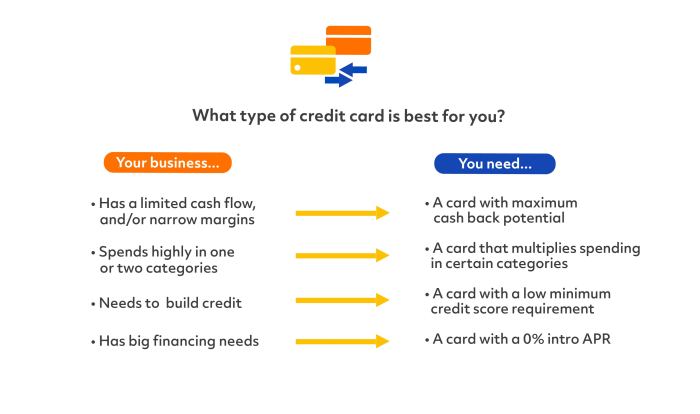Best Strategies for Long-Term Financial Growth and Stability
Best strategies for long term financial growth and stability – Best strategies for long-term financial growth and stability are crucial for securing a comfortable future. This guide explores diverse approaches, from strategic investing and retirement planning to effective debt management and risk mitigation. We’ll delve into the nuances of various investment strategies, the importance of emergency funds, and the role of budgeting in achieving long-term financial well-being. Understanding and implementing these strategies empowers you to build a secure and prosperous financial future.
We will cover key areas including diversification of investment portfolios, comparing value and growth investing, creating effective retirement plans, managing debt, building emergency funds, budgeting techniques, real estate investment considerations, inflation protection, and comprehensive risk management. By understanding these elements, you can create a personalized financial plan tailored to your individual needs and goals.
Debt Management and Financial Stability
Effective debt management is crucial for achieving long-term financial stability. High-interest debt can significantly hinder your ability to save, invest, and build wealth, ultimately impacting your overall financial well-being. Understanding the strategies for managing debt and developing a realistic repayment plan are essential steps towards securing a financially sound future.High-interest debt, such as credit card debt or payday loans, carries substantial long-term financial implications.
The compounding interest can quickly snowball, leading to a larger debt burden than the initial amount borrowed. This can restrict access to credit, limit opportunities for investment and savings, and even lead to financial distress. Furthermore, the constant stress associated with managing significant debt can negatively affect mental and physical health. Proactive debt management is therefore vital for mitigating these risks and securing a more stable financial future.
Strategies for Managing High-Interest Debt
Reducing high-interest debt requires a multi-pronged approach. Prioritizing high-interest debts and aggressively paying them down is a key strategy. Exploring options like debt consolidation loans, which combine multiple debts into a single loan with a lower interest rate, can significantly reduce monthly payments and accelerate the repayment process. Negotiating with creditors to lower interest rates or establish more manageable payment plans is also a viable option.
Finally, increasing income through additional work or a higher-paying job can free up more funds for debt repayment.
Long-Term Impact of Significant Debt
Carrying significant debt has profound long-term consequences for overall financial health. It limits the ability to save for retirement, buy a home, or invest in other opportunities for wealth building. The constant pressure of debt payments can lead to financial stress and anxiety, affecting mental well-being. Furthermore, a poor credit score resulting from high debt levels can make it difficult to secure loans, rent an apartment, or even get certain jobs.
The cumulative effect of these factors can significantly hinder long-term financial progress and stability.
Creating a Realistic Debt Repayment Plan
Developing a realistic debt repayment plan involves a structured approach. The following steps provide a framework for creating a personalized plan:
- List all debts: Compile a comprehensive list of all outstanding debts, including the creditor, balance, interest rate, and minimum payment.
- Calculate your monthly income and expenses: Accurately track your monthly income and expenses to determine how much money is available for debt repayment.
- Prioritize debts: Focus on paying down high-interest debts first, such as credit cards, to minimize the overall interest paid.
- Choose a repayment method: Select a debt repayment strategy, such as the debt snowball method (paying off the smallest debt first for motivation) or the debt avalanche method (paying off the highest-interest debt first to save money).
- Create a budget: Develop a detailed budget that allocates funds for debt repayment, essential expenses, and savings.
- Monitor progress and adjust as needed: Regularly track your progress and make adjustments to your plan as necessary, considering unexpected expenses or changes in income.
Emergency Fund and Unexpected Expenses: Best Strategies For Long Term Financial Growth And Stability
Building a robust emergency fund is a cornerstone of long-term financial stability. It provides a crucial safety net against unforeseen circumstances, preventing debt accumulation and protecting your financial well-being. Without a sufficient emergency fund, even minor unexpected expenses can quickly spiral into significant financial problems.Unexpected expenses are, by definition, unpredictable, but certain categories of expenses occur with some regularity.
Planning for these can mitigate the impact when they arise. Having a readily available emergency fund significantly reduces the stress and financial strain associated with these events.
Types of Unexpected Expenses
Unexpected expenses can range from minor inconveniences to major financial setbacks. Examples include medical emergencies (unexpected illnesses or injuries), home repairs (plumbing issues, roof damage), vehicle breakdowns, job loss, and family emergencies. Even seemingly small events, like a sudden appliance malfunction or a pet’s unexpected veterinary visit, can quickly deplete savings if not adequately prepared for. Preparing for these possibilities minimizes their financial impact.
Strategies for Saving and Building an Emergency Fund
Consistently saving money requires discipline and planning. Budgeting is essential – carefully tracking income and expenses helps identify areas where spending can be reduced. Automating savings is highly effective; setting up automatic transfers from your checking account to a savings account ensures regular contributions, even when funds are tight. Consider setting a savings goal, perhaps three to six months’ worth of essential living expenses, and breaking this down into smaller, manageable monthly targets.
Regularly reviewing your budget and progress reinforces your commitment and helps stay on track.
Savings Vehicles for Emergency Funds
Choosing the right savings vehicle is crucial for maximizing returns while ensuring easy access to funds when needed. High-yield savings accounts, money market accounts, and even short-term certificates of deposit (CDs) can be suitable options, depending on your individual needs and risk tolerance.
| Savings Vehicle | Accessibility | Interest Rate | Suitability for Emergency Fund |
|---|---|---|---|
| High-Yield Savings Account | Easy access | Relatively high | Excellent; offers liquidity and competitive returns. |
| Money Market Account | Easy access, often with limited check-writing | Moderate | Good; provides liquidity with slightly higher interest than savings accounts. |
| Short-Term Certificate of Deposit (CD) | Limited access (penalty for early withdrawal) | Higher than savings accounts | Less suitable for emergency funds unless you have other readily available funds. Consider for longer-term savings goals alongside the emergency fund. |
| Checking Account (with a cushion) | Immediate access | Low or zero interest | Acceptable for a very small emergency fund, but not ideal due to low returns and potential for overspending. |
Inflation and its Impact on Long-Term Financial Planning
Inflation, the persistent increase in the general price level of goods and services in an economy, significantly impacts long-term financial planning. Understanding its effects is crucial for preserving and growing your wealth over time. Failing to account for inflation can lead to a substantial erosion of purchasing power, rendering your savings less valuable than anticipated.Inflation’s impact on long-term savings and investment returns is multifaceted.
The purchasing power of your money diminishes as prices rise. For example, if your savings earn a 5% annual return but inflation is 3%, your real return is only 2%. This means your money is growing, but not as quickly as the rising cost of living. Furthermore, inflation can affect investment returns differently depending on the asset class.
Some assets, like real estate, may provide a hedge against inflation, while others, like bonds with fixed interest rates, might see their real returns reduced.
Inflation’s Impact on Savings and Investments
Inflation directly reduces the future value of your savings. If you save $10,000 today and inflation averages 3% annually, that $10,000 will only be able to buy about $7,440 worth of goods and services in 10 years. This reduction in purchasing power is particularly significant for long-term goals like retirement, where the impact of inflation compounds over decades.
Investments that don’t keep pace with inflation will effectively lose value over time. Consider a fixed-income investment like a bond; if the interest rate is lower than the inflation rate, your real return is negative. This underscores the need for strategies that can outpace inflation.
Strategies for Protecting Your Portfolio from Inflation, Best strategies for long term financial growth and stability
Several strategies can help protect your portfolio from the eroding effects of inflation. Diversification is key. Don’t put all your eggs in one basket; spread your investments across different asset classes to mitigate risk and potentially outperform inflation. Regularly rebalancing your portfolio can help ensure your asset allocation remains aligned with your risk tolerance and long-term goals, adapting to changing market conditions and inflation levels.
Investing in assets that historically keep pace with or exceed inflation is another important strategy.
Inflation-Hedging Assets
Examples of inflation-hedging assets include real estate, commodities (like gold or oil), and inflation-protected securities (TIPS). Real estate often appreciates in value alongside inflation, providing a potential hedge. Commodities, particularly gold, are often viewed as a safe haven during inflationary periods. TIPS, issued by governments, adjust their principal value based on inflation, offering a more predictable return in inflationary environments.
Equities, or stocks, also generally perform well over the long term, often outpacing inflation, although their returns are more volatile. However, the effectiveness of any inflation hedge depends on various economic factors and is not guaranteed. For example, during periods of high inflation, the price of gold might increase, offering a hedge, but it might also remain relatively stable or even decline if other market forces are at play.
Similarly, real estate prices can be influenced by local market dynamics and economic cycles, independent of general inflation trends.
Achieving long-term financial growth and stability requires a proactive and well-informed approach. By diligently implementing the strategies Artikeld – from diversifying investments and strategically managing debt to building robust emergency funds and proactively planning for retirement – you can significantly enhance your financial security. Remember, consistent effort, informed decision-making, and adapting to changing economic conditions are vital components of long-term financial success.
This journey requires commitment, but the rewards of financial freedom and security are well worth the effort.
Questions Often Asked
How often should I review my financial plan?
Ideally, you should review your financial plan annually, or more frequently if there are significant life changes (marriage, job loss, etc.).
What is the difference between a Roth IRA and a Traditional IRA?
A Roth IRA offers tax-free withdrawals in retirement, while contributions are made after tax. A Traditional IRA allows pre-tax contributions, but withdrawals are taxed in retirement.
How much should I have in my emergency fund?
Aim for 3-6 months’ worth of living expenses in your emergency fund.
What are some good inflation-hedging investments?
Real estate, commodities (like gold), and Treasury Inflation-Protected Securities (TIPS) are often considered good inflation hedges.



